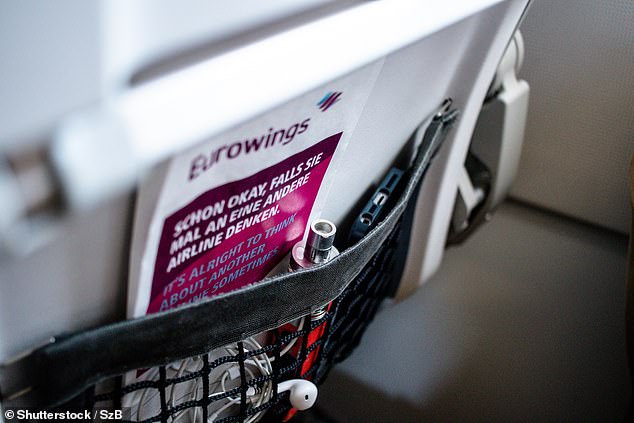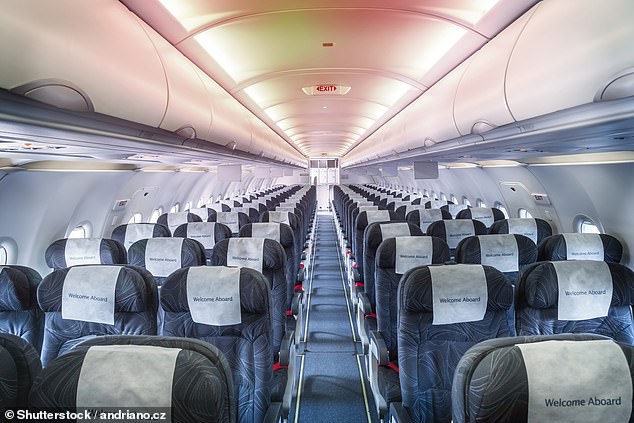Why this device commonly carried on flights must be packed VERY carefully – otherwise it could ‘explode’
Holidaymakers have been warned that a common item often kept in their pockets could pose a fire hazard on planes if not handled carefully.
Vapes, also called e-cigarettes, are used by approximately 82 million people worldwide and are therefore taken on millions of flights.
But many flyers may not be aware of the danger they pose – and of the rules and regulations surrounding their use and transportation during air travel.
Here we present the do’s and don’ts.
Fire hazard means that fumes must enter the cabin
Vapes use lithium batteries which are known to catch fire and explode
The fire hazard of fumes comes from their lithium batteries. They are used to heat the coil component of the device which heats the e-liquid, with the process creating vapor that users inhale.
That of Great Britain Civil Aviation Authority (CAA) explains: ‘Lithium batteries are very safe, but due to their high energy, if not handled carefully, misused or have a manufacturing defect, they can catch fire or explode.
‘Batteries have been the cause of a number of fires on board aircraft and during ground handling.’
In 2016, a bag caught fire while being loaded onto a plane. It was revealed that it had been set on fire by a vape battery.
And in 2019, a passenger’s e-cigarette battery overheated and exploded, causing a fire on an American Airlines flight.
The risk of fire hazard incidents means that fumes must be carried in the cabin and not checked into the hold, where a fire is much more difficult to fight.
The CAA adds that passengers may travel with “battery-operated electronic smoking devices (e-cigarettes, e-cigarettes, e-cigars, e-pipes, personal vaporizers, electronic nicotine delivery systems), but the” contents must be lithium metal batteries must not exceed two grams and that lithium batteries must not exceed a watt-hour capacity of 100 Wh.
Separate the batteries, turn off the device – and never charge it

The risk of fire hazard incidents means that fumes should be carried in the cabin and not checked into the hold, where a fire is much more difficult to fight
David Philips, van Vape superstoreemphasizes that spare batteries in carry-on luggage must be ‘individually packed to prevent short circuits’ and that the device must be ‘completely switched off’.
Charging them mid-flight is now prohibited, the CAA said.
Phillips says, “The best thing you can do is make sure your vaporizer is fully charged before you fly, and that you don’t empty it before boarding the plane.
“Check the airport’s online policy to find out if and where you can charge your device before the flight.”
He adds: ‘Vaping on an airplane is subject to the same laws as smoking and if you do, you can face stiff penalties and fines.
‘It’s not a good idea to risk vaping in the toilet because airlines have installed detectors that pick up not only cigarette smoke but also e-cigarette vapor.’
Detach the fuel tank
E-cigarettes have a small reservoir that contains the e-liquid.
Vaping company Go smoke-free recommends separating this tank from the device during flights as changes in cabin air pressure may cause the tank to leak.
It said: ‘The tank should be emptied and detached from the main unit if possible and kept in a separate clear plastic bag.’
Do not use more than 100 ml of e-liquids
Phillips said: ‘You can take e-liquids on the plane in your hand luggage, as long as the total amount you are carrying does not exceed 100ml. You can pack any extra e-liquids in your checked luggage.”

Passengers are allowed to take e-liquids on board the plane, as long as the total amount does not exceed 100 ml
